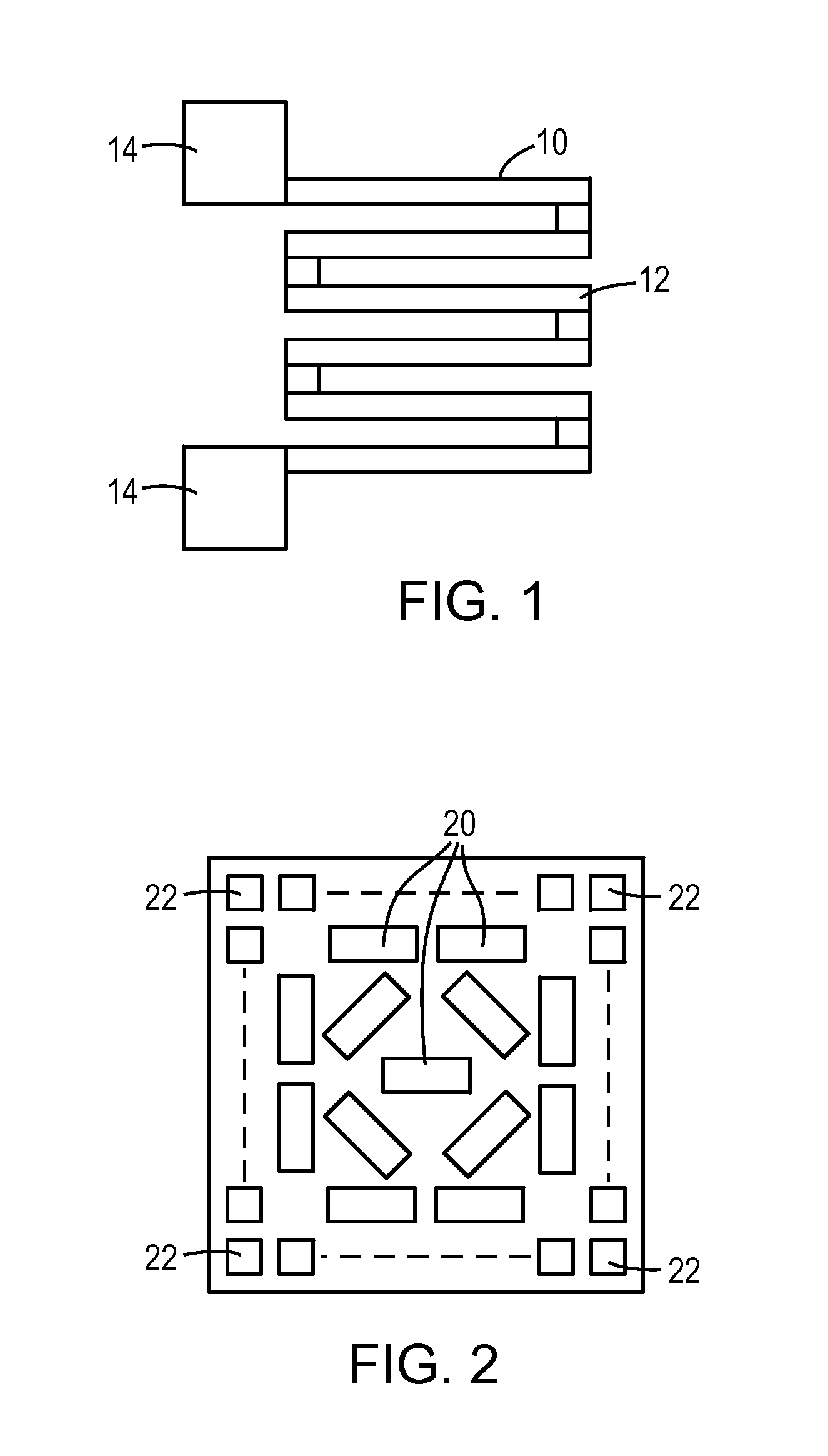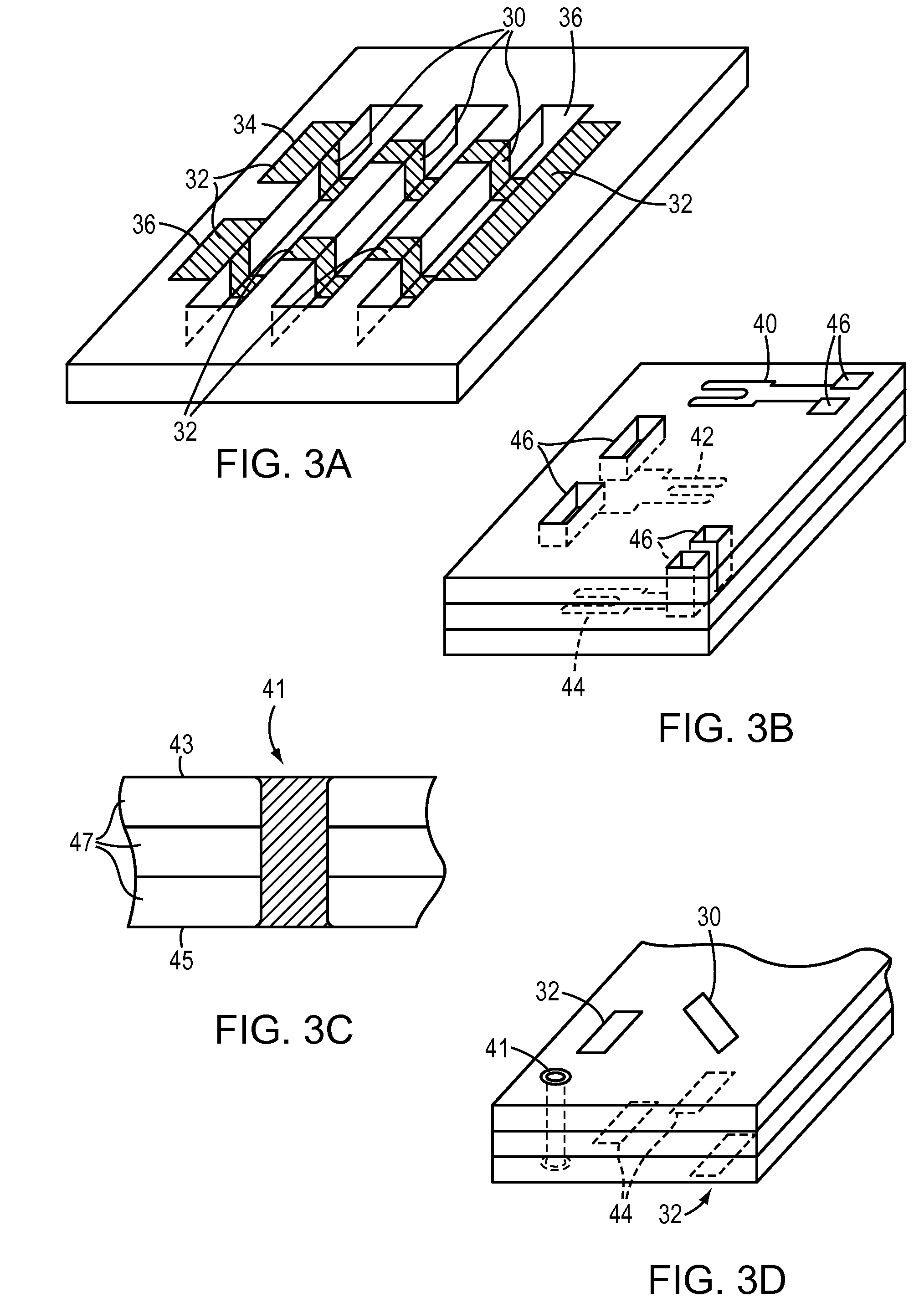Die scale strain gauge
a technology of strain gauge and die, which is applied in the direction of fluid pressure measurement, fluid pressure measurement by electric/magnetic elements, instruments, etc., can solve the problems of strain damage to the chips, significant failure mode of integrated circuit chips, and gauges usually made of metal foils
- Summary
- Abstract
- Description
- Claims
- Application Information
AI Technical Summary
Benefits of technology
Problems solved by technology
Method used
Image
Examples
Embodiment Construction
[0028]FIG. 1 is an illustrative arrangement of a serpentine pattern 10 of a deposited resistive material 12 on the surface of a chip that may be used as a strain gauge. Larger pads 14 may be used for making electrical connections. Depositing a resistive material, usually a metal, is sometimes referred to as “metallization,” is precisely controlled using current photo-lithographic deposition techniques. The width can be small and the length large to detect very small strains. As well known in the art, as the chip expands, say due to thermal conditions, the resistive element elongates. The length increases and the width decreases and the resistance of the element therefore increases. This is due to corresponding to well known relationships. As mentioned before, it is noteworthy that this embodiment uses the change in resistance of a deposited metal or metal-like material and does not use semiconductor elements created typical semiconductor processes, e.g. grown, diffused, etc. A depos...
PUM
| Property | Measurement | Unit |
|---|---|---|
| resistances | aaaaa | aaaaa |
| resistance | aaaaa | aaaaa |
| temperature | aaaaa | aaaaa |
Abstract
Description
Claims
Application Information
 Login to View More
Login to View More - R&D
- Intellectual Property
- Life Sciences
- Materials
- Tech Scout
- Unparalleled Data Quality
- Higher Quality Content
- 60% Fewer Hallucinations
Browse by: Latest US Patents, China's latest patents, Technical Efficacy Thesaurus, Application Domain, Technology Topic, Popular Technical Reports.
© 2025 PatSnap. All rights reserved.Legal|Privacy policy|Modern Slavery Act Transparency Statement|Sitemap|About US| Contact US: help@patsnap.com



